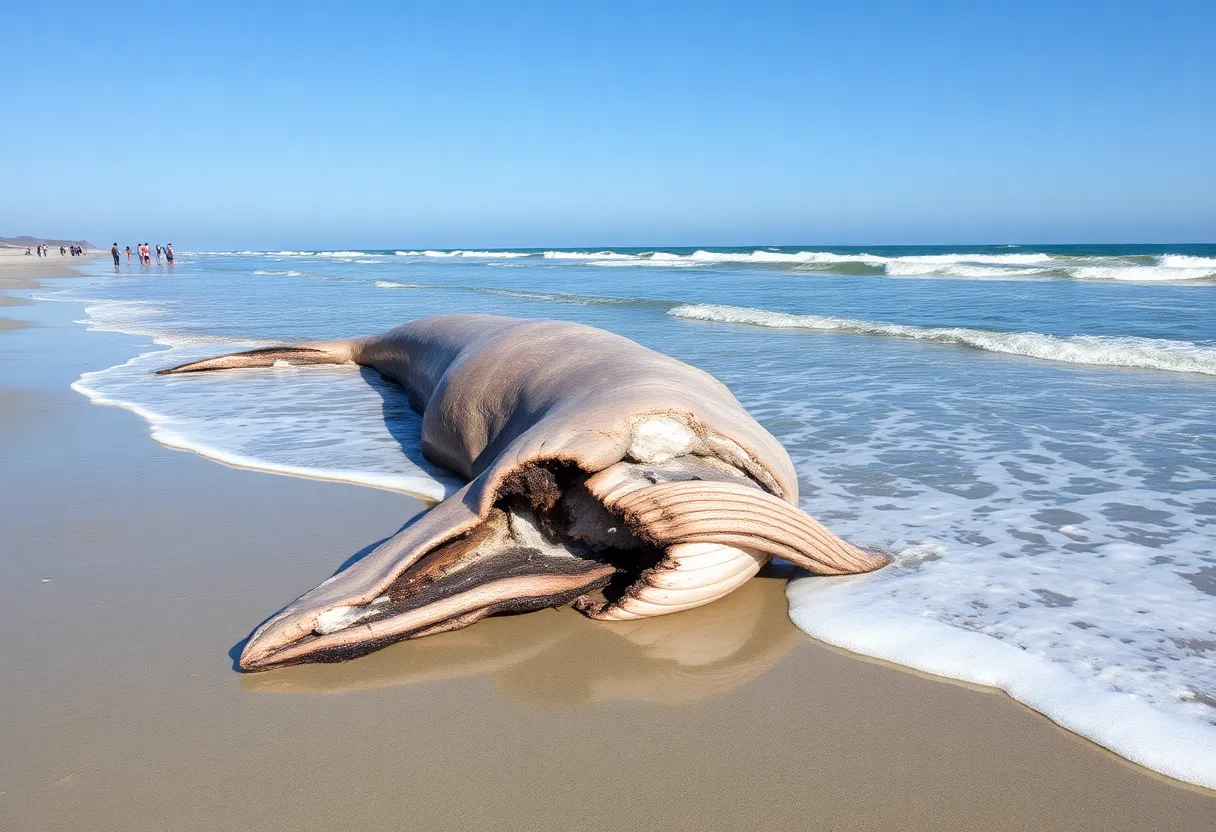News Summary
A decomposed whale carcass measuring approximately 55 feet has washed ashore at La Jolla Shores, leading to an investigation by NOAA scientists. Local residents reported a lingering odor even after the carcass was removed. Efforts are underway to identify the whale’s species and determine if its death is linked to a toxic algae bloom affecting the California coast.
San Diego, California
A decomposed whale carcass measuring approximately 55 feet washed ashore on La Jolla Shores beach early Wednesday morning, prompting an investigation by scientists from the National Oceanic and Atmospheric Administration (NOAA). The whale had likely been dead for several days before its arrival on the beach.
NOAA spokesperson Michael Milstein reported that the condition of the whale made it impossible to immediately determine its species. To assist with identification efforts, NOAA officials collected tissue samples for genetic testing. Milstein indicated that the whale was too large to belong to a typical gray whale species, which could narrow down the potential identities of the carcass.
As city crews worked to clear the remains from the beach later that day, local residents and beachgoers reported encountering a lingering odor even after the removal had been completed. The carcass was disposed of at the Miramar Landfill.
Toxic Algae Bloom Investigation
There is growing concern regarding the potential link between the whale’s death and a toxic algae bloom currently affecting marine life along the California coast. This bloom has been associated with the demise of several marine mammals and birds, particularly dolphins that have tested positive for high levels of domoic acid, a neurotoxin produced by the algae.
Milstein pointed out that the advanced decomposition of the whale presents a challenge, as there are no obvious indications to deduce the cause of death at this time. Determining the whale’s species through the genetic tests could provide further insights into its migratory behaviors and possible exposures to harmful substances in the water.
Environmental Concerns
Experts suggest that environmental factors, including debris from wildfires and fertilizer runoff, may be contributing to the ongoing spread of the toxic algae bloom. These pollutants can exacerbate the effects of the bloom, posing risks to marine ecosystems and public health.
The investigation into the whale’s species and the potential health implications of domoic acid exposure will take approximately one week to conclude. NOAA remains committed to understanding the broader impacts of the current situation on the marine environment and wildlife in the area.
Background on Marine Mammal Health
Whale strandings and deaths are not uncommon, and they often signal underlying issues within marine ecosystems, including pollution and declining food sources. The NOAA takes such incidents seriously, as they provide critical data that can help protect marine mammals and their habitats. The findings from this investigation will contribute to ongoing research aimed at preserving environmental health along the coast.
Residents and beachgoers are encouraged to remain vigilant and report any further incidents of stranded marine wildlife to authorities. Understanding the factors leading to these events is crucial for enhancing the resilience of marine life along the California coast.
Deeper Dive: News & Info About This Topic
HERE Resources
Additional Resources
- NBC San Diego
- San Diego Union Tribune
- 10 News
- The Inertia
- Los Angeles Times
- Wikipedia: Whale Stranding
- Google Search: Whale Death California
- Google Scholar: Marine Mammal Health
- Encyclopedia Britannica: Marine Mammal
- Google News: Whale Carcass La Jolla Beach








